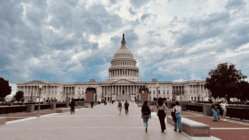
“Refinancing Is Going To Be More Expensive Than Ever”
This short IG video, titled “Refinancing Is Going To Be More Expensive Than Ever” was making the rounds on social media recently.
We were getting questions, so I decided to blog about it.
It is a good video, but the gentleman is only about half right.
He is referencing the change in fees that Fannie Mae and Freddie Mac recently imposed on most borrowers.
Fannie Mae Is Making Strong Borrowers Subsidize Weak Borrowers
I blogged about this in April: Fannie Mae Is Making Strong Borrowers Subsidize Weak Borrowers.
In summary: Fannie Mae and Freddie Mac increased the fees substantially for strong borrowers while lowering fees for weak borrowers (with lower down payments and credit scores).
The fees are also known as Loan Level Price Adjustments or LLPAs and they are charged for factors like: (1) Credit score; (2) Loan-to-value ratio (LTV); (3) Property Type; (4) Occupancy (owner or nonowner); (5) Number of units; (6) Property Type (SFR vs. Condo); etc.
Fannie added an extra fee for high debt ratios too but that just got rescinded thanks to aggressive industry pushback.
So, that is good news, but the other new fees remain.
The new fee structure applies to both purchases and refinances, but the video I reference above applies only to refinances.
And this is what the video gets wrong:
1. The new fees will not make loans more expensive in terms of fees or out-of-pocket costs; they will instead just make the rates higher.
This is because lenders will just offer higher rates to offset or cover the fees with additional “rebates.” For strong borrowers, the fees will go up by 1% in many cases, meaning lenders will have to offer those borrowers about a 1/4% higher rate to offset that fee. So – what the new fees really mean for refinances is that borrowers will have to wait for rates to drop even further before a refi makes sense.
2. Commercial banks and mortgage banks will not benefit in any way; Fannie Mae and Freddie Mac will.
The video says the banks are smart because they know that rates will drop and that everyone will want to refinance when they do. So, by imposing these fees now, according to the video, banks can cleverly make a lot more money when rates inevitably fall. BUT – commercial banks and mortgage banks actually hate these fees because they impose extra costs on their clients while also making it more difficult to refinance. And – it is the FHFA (the entity that regulates Fannie and Freddie) that is imposing these fees, and they all go to Fannie and Freddie (not to “banks”)
3. Not all borrowers will pay higher fees.
The video implies that all borrowers will pay higher fees, but that is not the case. Weaker borrowers with lower credit scores and less equity will actually see their fees go down, making it easier for them to refinance.
In any case, for most borrowers, the fees will be higher – meaning that most borrowers will now have to wait for rates to drop an extra 1/8% or 1/4% before refinancing makes sense.
Sign up to receive our blog daily
























